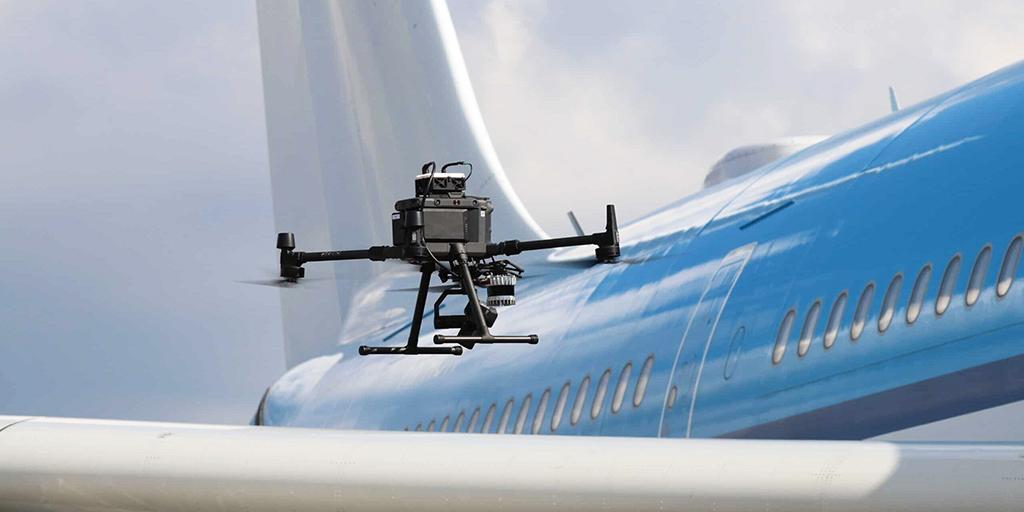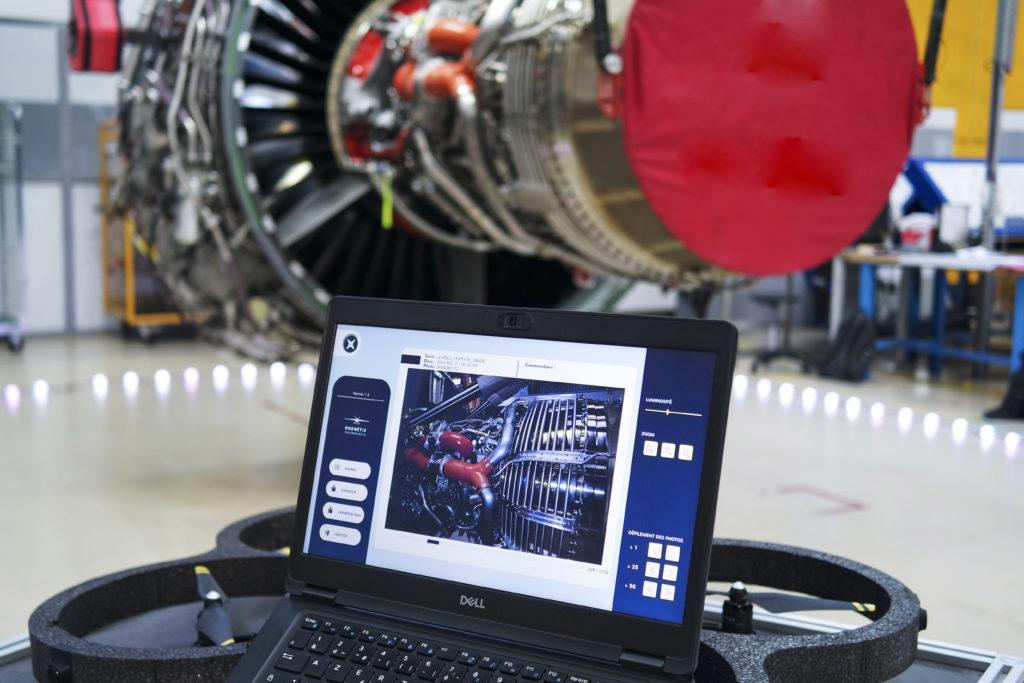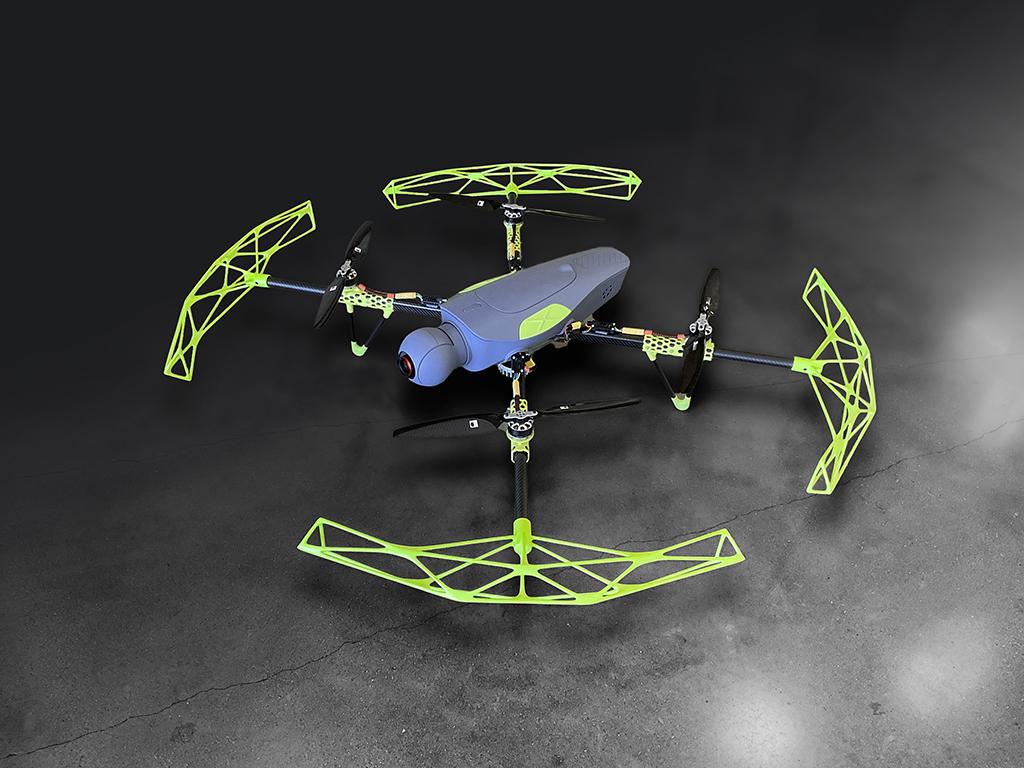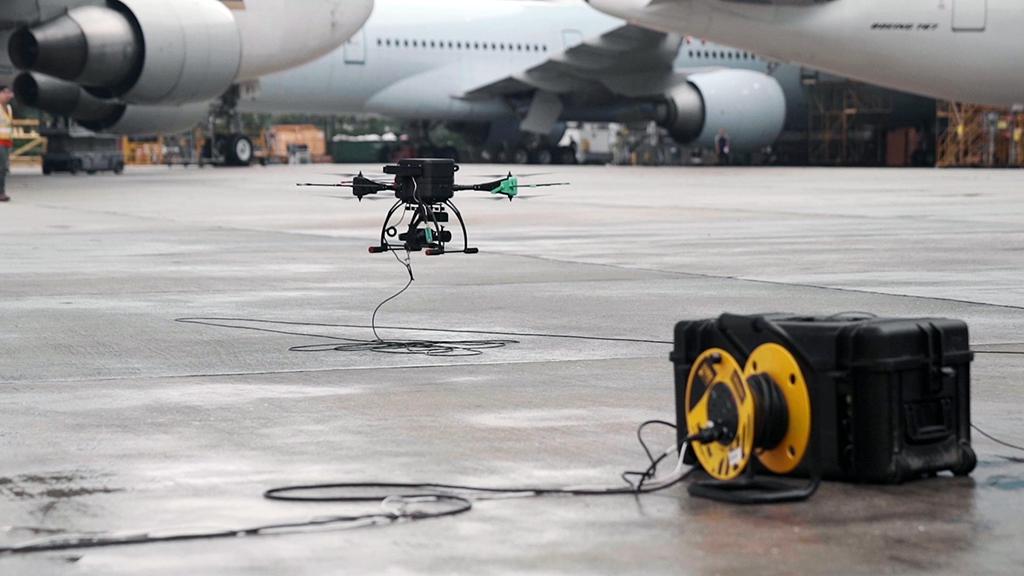
1. Inspection Drone Swarms
Company: Korean Air
Product: Korean Air has developed technology to inspect aircraft using swarms of small drones, which it says is the first of its kind in the aviation industry. Four drones inspect an aircraft fuselage simultaneously, taking high-definition photos of pre-planned areas, which Korean Air says reduces inspection time by 60%. The technology uses a collision-avoidance system and geofencing to maintain safe distances from surrounding facilities and prevent breakaways from the inspection area. The airline plans to conduct tests of the technology to increase accuracy and stabilize operations before its official launch in 2022.
marketplace.aviationweek.com/company/korean-air-lines-co-ltd-aerospace-division
2. Drone-as-a-Tool
Company: Mainblades

Product: Launched in 2017, Dutch startup Mainblades provides a “Drone-as-a-Tool” system for aircraft inspections that it says can perform a full narrowbody aircraft inspection and reporting in approximately 2 hr. The technology pairs robotics-driven software with lidar sensors to localize, map, navigate and plan inspections. In August 2021, Mainblades performed what it says was the first automated outdoor airport drone inspection of a commercial aircraft in Europe. It also recently extended its partnership with KLM Engineering & Maintenance, under which the companies will collaborate to roll out the technology for KLM’s fleet and obtain certification as part of Boeing’s aircraft maintenance manuals.
marketplace.aviationweek.com/company/mainblades
3. Gaining Industry Traction
Company: Donecle

Product: Drone inspection powerhouse Donecle is already being used by airlines and MROs such as AAR, Austrian Airlines, KLM and LATAM, but the technology has recently attained several new milestones. In 2021, Donecle’s drone technology was qualified by Airbus in its aircraft maintenance manual for lightning inspections on A320-family aircraft. It also partnered with 3D surface inspection specialist 8tree to incorporate its dent-scanning technology onto drones in an application called flying dentCHECK. Most recently, Donecle signed a customer agreement with Regional Jet Center to deploy its automated drone inspections on Embraer aircraft for the first time.
marketplace.aviationweek.com/company/donecle
4. Turnkey Inspections
Company: Dronetix

Product: French startup Dronetix has developed a drone-based MRO inspection system called Argos that can operate without needing to be programmed for specific object types and flying zones. Argos uses an indoor positioning system called Dronetix Light Track to control its flight parameters rather than programming a flight path via GPS, which it says is simpler and more turnkey than other drone-enabled inspection systems. Dronetix’s Neoviewer software automatically analyzes the drone scans to detect damage, construct a 3D model of the scanned object and identify points of interest. Safran Aircraft Engines is using the technology for aircraft visual inspections before and after MRO work.
marketplace.aviationweek.com/company/dronetix
5. Autonomous Inspections
Company: Rizse

Product: U.S.-based drone inspection startup Rizse has developed an unmanned aerial system called DragunFly that uses 3D lidar technology to autonomously navigate environments. It scans the exterior of an aircraft and uses artificial intelligence and machine learning to identify and report damage. Rizse says its analytics platform serves as a springboard for data retention and can help customers move toward predictive maintenance models. It is working with aviation industry customers such as Ascent Aviation and recently partnered with 4D Technology to develop a system that will incorporate DragunFly with the 4D InSpec, a 3D surface gauge used to find and measure damage.
marketplace.aviationweek.com/company/rizse
6. Scanning in Singapore
Company: ST Engineering

Product: ST Engineering’s DroScan solution is approved by the Civil Aviation Authority of Singapore (CAAS) to perform general visual inspections of aircraft during maintenance. The drone pairs with a ground control station to automate the aircraft inspection process, flying along pre-planned routes to capture high-definition images. Although the drone is power-tethered to meet CAAS requirements for operation within an aerodrome, it is also designed to support battery configuration. The technology was tested with airline customers such as Air New Zealand, and ST Engineering says it is in discussions with some customers to refine DroScan’s MRO workflow and conduct operational trials for their fleets.
marketplace.aviationweek.com/company/st-engineering-unmanned-air-systems





